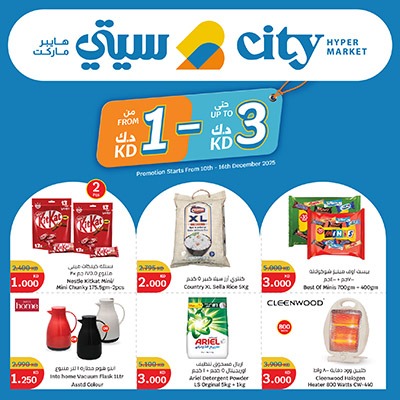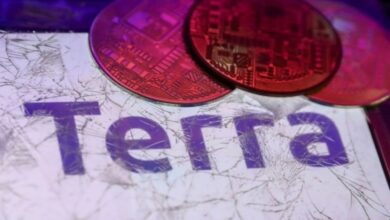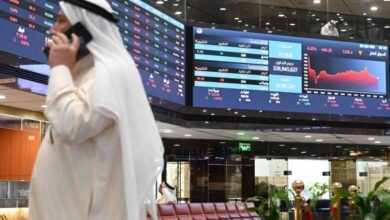Easing trade tensions boosts global, Gulf markets in May 2025

Despite ongoing uncertainty surrounding the U.S. decision to impose additional tariffs on imports from key trading partners, May 2025 witnessed a noticeable decline in fears of an escalating trade war and a subsequent global economic slowdown.
This shift was primarily due to the suspension of some U.S. measures and the initiation of negotiation channels with its trade partners, aiming to reach mutually acceptable solutions and limit the negative repercussions of the tariff decisions.
This positive turn of events was reflected in the performance of major global stock markets, most of which posted gains in May, reports Al-Jarida daily.
As investor fears over economic deceleration subsided, oil prices climbed during the month—Brent crude rose by 4.7% to approximately $63.9 per barrel by month-end. Additionally, OPEC+ announced an increase in oil production for June 2025 by 411,000 barrels per day, citing favorable market fundamentals and encouraging demand indicators.
According to a report by the Kuwait Investment Company, the performance of Gulf stock markets in May 2025 varied, with most recording modest to marginal gains. However, the Saudi market remained under pressure, as the Tadawul All Share Index fell by 5.84%—marking its fourth consecutive monthly loss. This decline came despite strong corporate earnings, with listed companies (excluding Aramco) reporting a 22% increase in Q1 net profits to 40.5 billion Saudi riyals.
The market’s poor performance was attributed to weak liquidity, influenced by banks issuing sukuk and investor preference for high-return instruments, as well as capital diverted to IPOs.
Market volatility across Gulf exchanges declined in May, supported by a cooling of U.S.-led trade tensions and the start of constructive negotiations, which helped stabilize financial markets and improve investor sentiment. The clearer outlook for global growth, with reduced risk from tariffs, also contributed to a more favorable environment.
After two consecutive months of mild losses—0.34% in March and 1.42% in April—Boursa Kuwait rebounded in May, posting a 1.92% gain in its General Market Index. This came amid a notable increase in liquidity, particularly for leading stocks, which saw a 35% jump in trading value compared to 2024.
The Premier Market Index advanced by 2.87%, pushing its year-to-date gains to 12.25%, while the General Market Index’s gains rose to 10.2%, placing Kuwait at the top of GCC markets in terms of performance for the first five months of 2025.
These gains were driven by several factors: a marked decline in global market volatility, growing investor confidence that the worst was over, and strong financial results from listed companies. Premier Market firms posted Q1 growth in net profits and operating revenues of 6% and 10%, respectively.
Market capitalization in the Gulf
In terms of market capitalization, GCC exchanges lost a combined $51 billion in May 2025—following a $102 billion drop in April—bringing the total to $3.89 trillion by month-end. The Saudi market bore the brunt, losing $82 billion to settle at $2.45 trillion.
In contrast, other GCC markets gained $31 billion, led by — UAE markets, which added $23.5 billion to reach a total of $1.06 trillion ($797 billion for Abu Dhabi, $259.5 billion for Dubai) and Kuwait Stock Exchange, which gained $5 billion, raising its market value to $160 billion.
For the first five months of the year, total market capitalization losses across GCC exchanges reached $236 billion. Of this, the Saudi market accounted for $265 billion in losses. Meanwhile, Kuwait and UAE bourses saw gains of $16 billion and $14 billion, respectively—with Dubai contributing $13 billion of the UAE total.
Kuwait Stock Exchange sector breakdown
As of the end of May 2025, the Kuwait Stock Exchange’s market capitalization stood at 49.21 billion dinars —an increase of 4.9 billion dinars since December 2024.
Key contributors included — Banking sector: 30.9 billion dinars (62.8% of total market cap), up by 3.78 billion dinars; Real estate sector: 3.45 billion dinars (7%) up by 624 million dinars; Industrial sector: 2.71 billion dinars (5.51%), up by 200 million dinars; Financial services: 5.08 billion dinars (10.32%) and Telecommunications: 3.165 billion dinars (6.43%)
Following strong corporate earnings in 2023 and 2024, valuations across GCC markets have become more attractive, even after three years of equity market gains.
Most Gulf stock markets now trade at lower price-to-earnings (P/E) ratios compared to emerging and developed markets — Kuwait Stock Exchange: 17.3x, Saudi Stock Exchange: 15.6x, Abu Dhabi Exchange: 20.8x (due to new listings), Dubai Financial Market: 10x, Qatar Exchange: 12x and Bahrain Bourse: 9.2x
These figures highlight the relative attractiveness of GCC equities and suggest potential for further investment, particularly in undervalued markets like Dubai and Bahrain.












